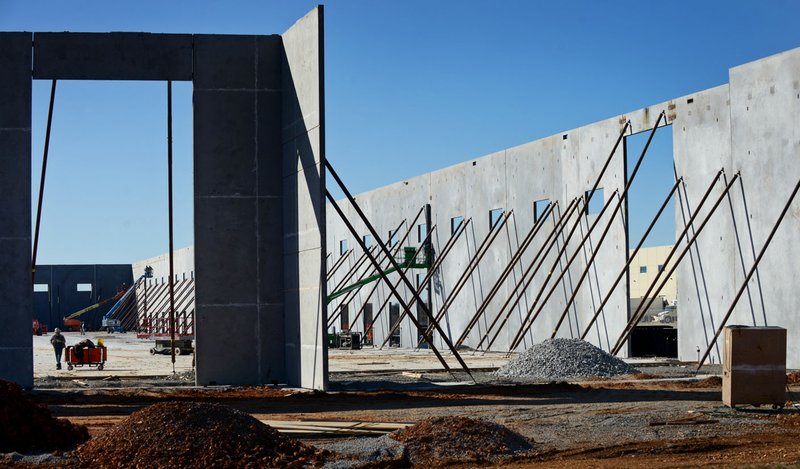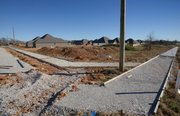BENTONVILLE -- Officials are looking to realign the city's four voting wards to better balance voter representation.
George Spence, city attorney, recommended during a Committee of the Whole meeting Feb. 13 council members consider realigning the four council wards because the populations have become unbalanced.
The presented options
Plan 1
The northeast ward is bounded by Southeast 14th Street to the south and North Walton Boulevard to the west. Its population would be 13,726. The northwest ward is bounded by Southwest 14th Street to the south and North Walton Boulevard to the east. It also includes part of the city east of North Walton Boulevard, north of Tiger Boulevard. It would have a population of 12,623. The southeast ward is bounded by Southeast 14th Street to the north, city limits to the south and stretches west north of Southwest Regional Airport Boulevard to Greenhouse Road with a population of 9,920. The southwest ward would have a population of 7,670 and is everything remaining to the southwest, west of Southwest H Street.
Plan 2
The four wards are vertical. North Walton Boulevard and Southwest I Street divide the two western wards from the two eastern wards. The two western wards are divided by several streets. J Street separates the two eastern wards. The population of each ward from the west would be 12,306, 10298, 11,606 and 9,728.
Plan 3
The two eastern-most wards are the same as in plan 2. Their populations would be 10,124 and 12,542. The two western-most wards are stacked, being divided a few blocks south of Southwest 14th Street. The southern ward would have a population of 11,464 and juts out west further than the northern ward, which would have a population of 9,807.
Plan 4
Walton Boulevard separates the two western wards from the two eastern wards. Central Avenue separates the northeast and southeast wards. Smaller streets just south of Southwest 14th Street separate the two western wards. The population breakdown would be 10,131 in the northeast, 10,930 in the northwest, 11,456 in the southwest and 11,420 in the southeast.
Source: Staff report
The current wards intersect from Central Avenue and A Street.
The population of Ward 3 is at least double each of the other three wards, according to city figures.
Ward 3 is the city's southwest corner, everything south of Southwest 14th Street and west of South Walton Boulevard. Its population is 20,817.
The population of Ward 1, the city's northeast corner, is 6,098. The population of Ward 2, the city's northwest corner, is 7,720. The population of Ward 4, the city's southeast corner, is 9,303.
Having wards with equal population protects the constitutional rights of voters to have equal representation, said David Schoen, attorney with the Arkansas Municipal League. He explained an area with a smaller population will have more influence than an area with a larger population when both areas have the same number of representatives.
Spence presented four maps showing possible ward realignment options to keep the boundaries along major roads.
The first and fourth options kept quadrants, while the second and third options illustrate what vertical wards would look like.
The fourth option, what Spence considered the best, keeps the boundary dividing Wards 1 and 4 at Central Avenue. It moves the western boundaries to Walton Boulevard from A Street. The current Ward 2 would shift south past Southwest 14th Street, where Ward 3 would pick up and include everything south of Ward 2 and west of South Walton Boulevard.
The population breakdown would be 10,131 in the northeast, 10,930 in the northwest, 11,456 in the southwest and 11,420 in the southeast.
Council members expressed concern the southwest ward would soon have a substantially larger population since that's where the city's main growth is.
"You're starting out with more people in that ward than in any of the other three wards," said Ward 2 Alderman Chris Sooter. "We know it's going to grow by the thousands."
Growth is going to be limited west of Walton Boulevard and north of West Central Avenue because of the terrain, Sooter added.
Ward 1 Alderwoman Stephanie Orman suggested looking at creating a fifth ward by splitting Ward 3 into two since its population is about double of each of the other wards.
"We may be a little early for that," Ward 3 Alderman Bill Burckart said Thursday.
The city estimates its most recent population at 45,000. Council members are elected every four years, instead of every two, once the population reaches 50,000, according to state law.
Currently, two council members represent each of the four wards. Council members are elected at-large for two year terms.
Burckart said he would prefer to balance the wards then re-evaluate after the population reaches the 50,000 mark. It would be better to add another ward when term lengths are changed, he said.
"Let's start with getting back to even, or close to it, and move forward from there," he said.
Council members also shied away from the options where the wards were more vertical. It makes more sense to have quadrants rather than strips so the area being represented doesn't stretch the length of the city, said Ward 2 Alderman Tim Robinson.
The amount of maps and options that could be drawn are endless, Spence said, adding it's also possible to consider having single alderman wards or having aldermen elected solely within their ward.
The city hasn't changed its districts since 1996, according to Troy Galloway, community and economic development director.
State law doesn't give a specific time or requirement of how often ward realignment needs to be done or how to do it, Schoen said.
"Commonly, it will be done after a census," he said.
The population is so out of balance in Bentonville's wards it needs to be addressed, Spence said.
"I don't think doing nothing is an option," he told council members.
Spence also emphasized the importance of getting it done after rather than before an election.
"If you do it immediately before the election, it looks like you're trying to affect the election, which we are not trying to do," he said. "All we're trying to do is rebalance them [the voting wards]."
The proposal, which doesn't have the new ward boundaries defined yet, has the changes going into effect Jan. 1, 2019.
Council members asked Spence to gather more information regarding population growth projections before continuing. That may be as soon as the Feb. 28 council meeting.
The council will need to adopt an ordinance once its decision is made. A public hearing isn't required.
NW News on 02/19/2017



